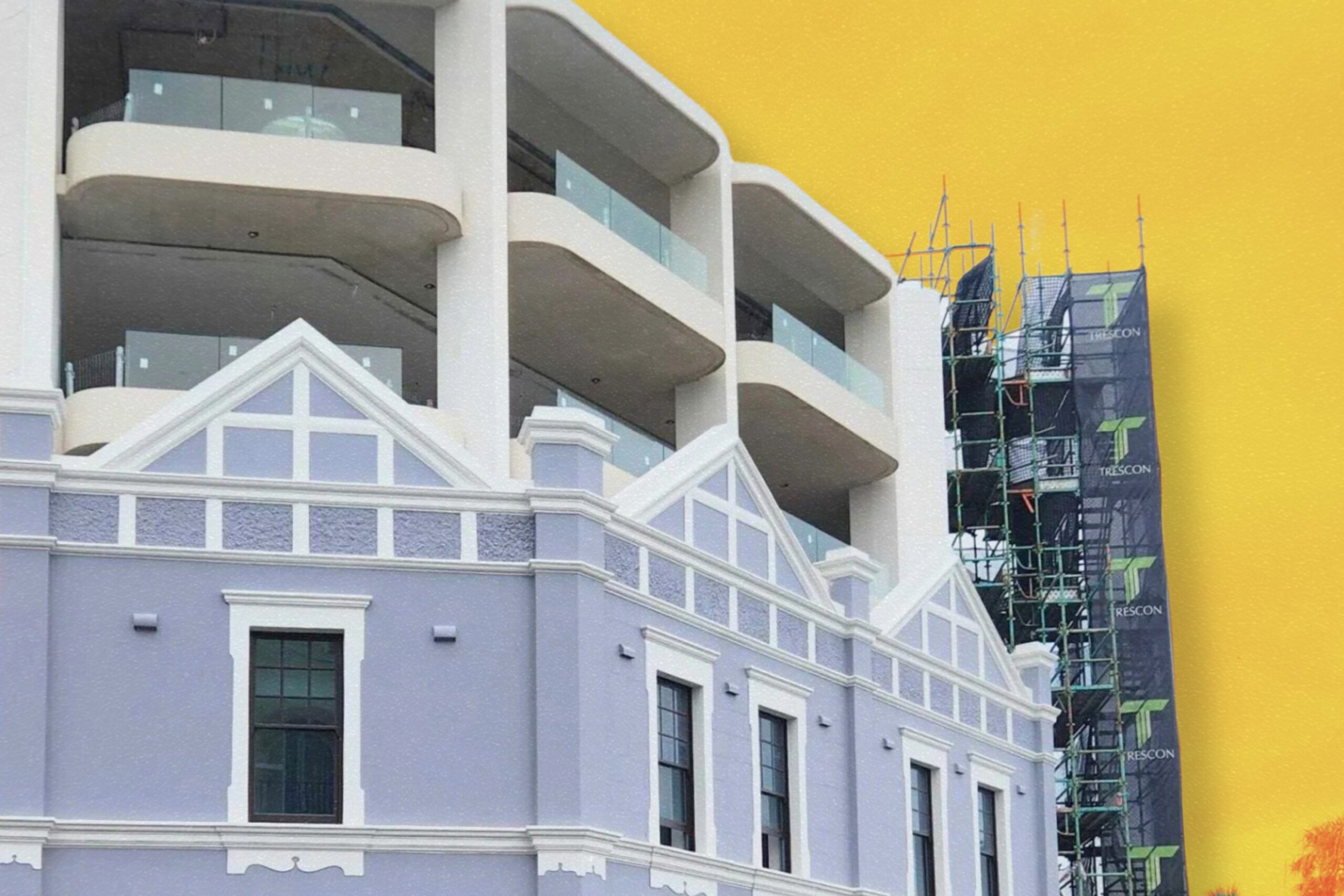- Bondi’s new beachfront penthouses raise eyebrows over controversial architectural design.
- The “facadism” debate highlights a clash between preserving history and prioritising new development.
- Questions arise about who is to blame and what the future holds for Aussie architecture.
There’s a lot going for Bondi, from its pioneering fitness scene — spearheaded by Australia’s newly-crowned successor to F45 — to its enviable date spots and pubs. However, there are also a few things working against its largely pristine image. It gets overrun with tourists in summertime and the commute in and out of the city is bumper-to-bumper at the best of times. Now, you can add some questionable architectural developments to that list…
The Corner Of Campbell And Hall
Our very own founder and resident super sleuth, Luc, is something of a BNOC (‘big name on campus’, for the blissfully unaware) in Bondi. Out on one of his customary morning excursions, he spotted this development on the corner of Campell Street and Hall Street. Imaginatively and aptly named ‘Hall & Campbell‘, these brand new penthouse and beachfront accommodations promise “unique lifestyle services and state-of-the-art wellness amenities” alongside sweeping views of the iconic beach.
Funded by the Rebel Property Group, the apartments don’t sound too shabby and don’t look it either, if you take a peek at one of the many mockups available on the development’s website. However, as a lowly pedestrian, it wasn’t the tasteful interiors or panoramic ocean views that caught Luc’s eye. Rather, it was the much more questionable exterior design that included the heritage-listed facade — beautiful and undoubtedly worth keeping, or at least worth the argument — which had been bolted onto the front of the very postmodern new development, with seemingly no consideration for how this might actually look…

Reminiscent of the drawn-out and contentious debate over how Bondi Pavilion should best be modernised and preserved — for this writer’s money, the final outcome appears to be a pretty spot-on balance between keeping the good old stuff while brightening it up for the needs of its modern-day foot traffic — Luc’s perfectly understandable reaction was to assume that the Hall & Campbell mess was the result of “council bureaucracy gone wrong”. However, a little digging reveals that there may be a bigger story at play…
Australia’s Long History Of Farcical Facades
It won’t come as a surprise to anyone that Australia’s residential architecture has undergone a lot of changes since the country was first settled by its European colonisers a couple of centuries back. And, as a result, its relationship to conservation, particularly regarding the facades of yesteryear, has been a contentious one.

Ever-evolving compromises between heritage preservation and modern construction, have been a hallmark since the 1980s amid a building boom that was countered by public calls to protect the nation’s historical structures. Rather than outright demolition of old buildings, “facadism” was born.
This approach was originally seen as a concession not history, especially in the context of aggressive demolitions throughout the 1950s and 60s, but has since been turned upon by many in the building community. Not only do expert architects like Hannah Tribe describe it as “empty facadism”, but even the National Trust recognised in 1992 that facadism was more of a political compromise than a genuine effort at conservation.

Whatever you might think of the debates hiding behind the phenomenon, the outcome is, unfortunately unchanged: stark, unsympathetic juxtapositions of modern and heritage elements emerge and our retinas are burned in the process. Far from being an issue isolated to the Bondi Beach bureaucracy, this is an issue looming large across the antipodean land mass. So, what does the future have in store?
The Contested Future Of Facades
Opinions on facadism remain starkly divided. Author and academic Paul Downton is one of many to criticise current trends, citing a “lack of imagination” in the way historic elements are integrated into modern developments… or rather, how they fail to be tastefully or meaningfully integrated. He argues that many projects feel disconnected from the buildings they aim to preserve:
Related Stories
“It’s not saying hello, it’s not shaking hands, it’s not trying to dress in some similar way to say that they belong to the same club. It’s just wildly different.”
Paul Downton
But others continue to defend the process. Dr Nic Bao of RMIT University suggests that critics and proponents alike can agree on one thing: it’s preferable to the complete demolition of heritage buildings. While facades “may not wholly capture the essence or integrity of the original structure,” they still contribute to the character of Australia’s streets and prop up a sense of historical continuity.
With a slew of suburbs set for massive property value growth — and doubtless with it a heap of redevelopment — this won’t be the last time we see some questionable facades popping up on Australian streets. Just try to remember, folks, that it’s what’s on the inside that counts…
